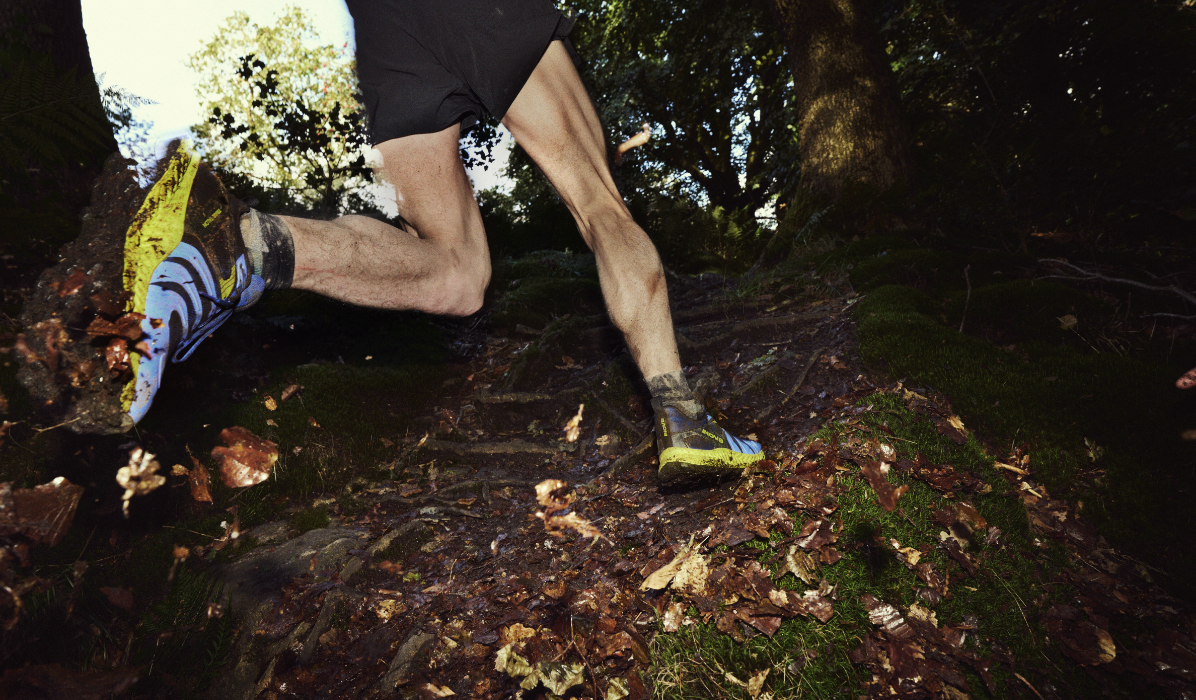
Trail running has never been more popular, attracting newcomers and seasoned road runners alike. With hundreds of races taking place every year, a trail 10K offers a great first experience of off-road racing.
We asked INOV8 ambassador and running coach Sarah McCormack to provide a 10k training plan to help you prepare for your event. Sarah is a UK Athletics Certified Trail & Fell Running Coach and draws on a glittering athletics career of her own. Her victories include being a former Irish Cross Country champion and Mountain Running World Cup winner.
We hope this plan helps you storm your trail 10K and, of course, enjoy it. If you’re looking for some race inspiration, there are some event suggestions at the end of this guide too.
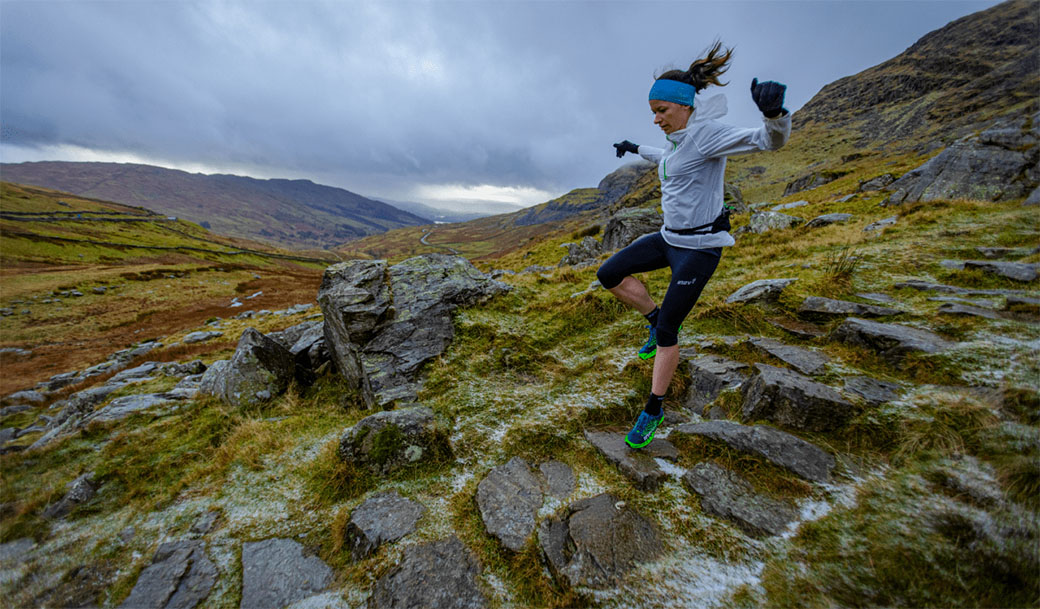
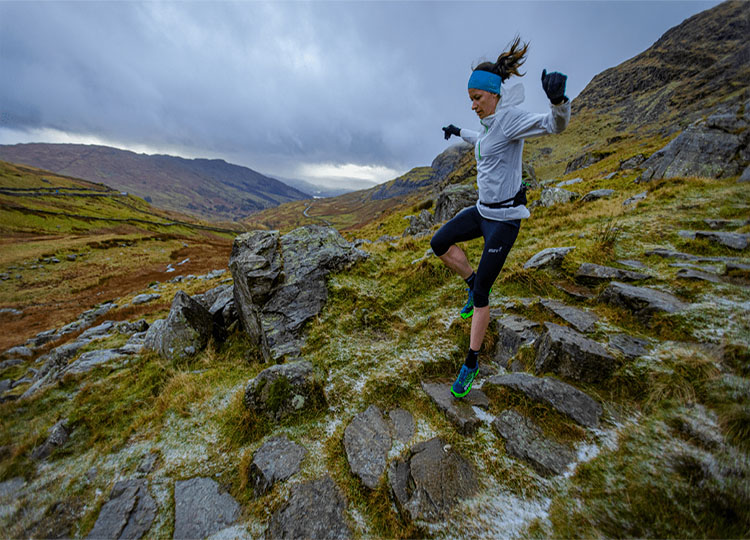
Before you start
It’s always a good idea to get the go-ahead from your doctor before starting any exercise program.
Our training plan is for runners who are already running a minimum of four days per week. If week one is looking a bit ambitious for you, reduce the mileage and focus on slowly building up over a number of weeks. Sudden jumps in mileage are a recipe for injury.
Although the plan has six running days, it can be easily adapted down to five days, by skipping the Saturday session. You could also adapt the plan down to four days by skipping Saturday and one of the hard sessions. If you do this, try to maintain a mix of different session types (so don’t drop all the hill sessions in favour of fartleks – maintain a variety by running them on alternate weeks).
Equally, the sessions can be moved around to fall in line with your normal training pattern. However, it’s important to space your hard sessions with easy or rest days to make sure you recover properly.
If you’re used to only doing one hard run per week, don’t jump into doing two hard sessions from the start of the plan. Adapt the program to suit you, by gradually introducing more hard running. You could do this by doing half the number of reps and then building up, or by running two hard sessions on alternate weeks.
Sarah McCormacks 10-week training trail 10k training program
Be sure to read the training plan guidelines in conjunction with this program, as it explains the sessions in more depth.
| Week | Mon | Tues | Weds | Thurs | Fri | Sat | Sun |
1 | Rest | Hill reps: 60s - 90s - 2 min - 3 min - 2 min - 90s - 60s hard uphill. Jog back down to the bottom of the hill after each rep. | 3 miles - easy | 4 miles - easy | Flat surges: 6 x (20s fast/3 min easy jog) | Rest or 3 miles - easy | 6 mile long run |
| 2 | Rest | Hill reps: 5 x 2.5 min hard uphill, easy run back down after each rep | 4 miles - easy | 4 miles - easy | Rest | Rest or 4 miles - easy | 7 mile long run |
| 3 | Rest | Hill reps: 5 x 3 min hard uphill, easy run back down after each rep | 3 miles - easy | 5 miles - easy | Steady tempo: 15 mins of steady running @ 2-hour race pace | Rest or 3 miles - easy | 8 mile long run |
| 4 | Rest | Uphill surges: 6 x (30s fast uphill/2 min downhill & flat recovery jog) | 4 miles - easy | 5 miles - easy | Progression run: 10 mins of running @ 2h race pace (75-80 % effort) followed immediately by 5 mins at 40-60 min race pace (90-95 % effort) | Rest or 4 miles - easy | 9 mile long run |
| 5 | Rest | Hill reps: 4 x (4 min hard uphill/jog back down to the bottom) | 5 miles - easy | 4 miles - easy | Flat surges: 6 x (20s fast/3 min easy jog) | Rest or 5 miles - easy | 7 mile long run |
| 6 | Rest | Steady tempo: 20 mins of steady running @ 2-hour race pace | 4 miles - easy | 5 miles - easy | Fartlek: 6 x (3 min fast tempo/90s easy jog). Aim 1h race pace (90 % effort) for your 3 min reps | Rest or 5 miles - easy | 10 mile long run |
| 7 | Rest | Hill fartlek (25 mins): Using an undulating route, run all uphills at a hard intensity, and all flats & descents at easy recovery pace, for 25 mins. | 6 miles - easy | 4 miles - easy | Rest | Rest or 5 miles - easy | 8 mile long run with pickup: 5 mile easy, 2 mile at 1.5 hour race pace (80 % effort), 1 mile easy |
| 8 | Rest | Hill reps: 1-4-1-4-1-4 min hard uphill, with a jog back down to the bottom after each rep | 5 miles - easy | 6 miles - easy | Fartlek: 6 x (4 min fast tempo/2 min easy jog). Aim 1h race pace (90 % effort) for your 4 min reps | Rest or 4 miles - easy | 9 mile long run |
| 9 | Rest | Steady tempo: 25 mins of steady running @ 2-hour race pace | 4 miles - easy | 4 miles - easy | Hill fartlek (30 mins): Using an undulating route, run all uphills at a hard intensity, and all flats & descents at easy recovery pace, for 30 mins. | Rest or 4 miles - easy | 7 mile long run |
| 10 | Rest | Fartlek: 3min-2min-1min-30s-3 min-2min-1min-30s fast but relaxed with 2 min recovery jog between reps (aim no faster than 1h race pace for the 3 & 2 min reps, and 30 min race pace for the 1 min and 30s reps). Finish with plenty left in the tank. | 4 miles - easy | Rest | 3 miles with 4 x 10s relaxed strides | Race | 5 mile long run |
Training plan guidelines
For structured sessions, warm up for 10-15 minutes before (including 4 x 10s strides) and warm down for 10-15 minutes after. Structured sessions are tempo runs, fartleks, hill reps, progression runs, and runs with surges.
Fartleks
Aim for a hard 90% effort for your reps - but not flat out (90% effort is approximately your one-hour race pace). Your fartleks can be done on firm, rolling trail, or on grass in a park.
Surges and strides
These are not sprints! They are fast 10-30 second accelerations that are great in a warm-up for a session/race, or as a way of including a little bit of leg speed training at the end of your easy run. They should be nice and quick, but not flat-out sprints. Aim around 80-90 % of your top speed, so you get the benefits of spinning the legs quickly without any fatigue or muscle soreness.
Steady tempo runs
These should be done at a moderate 70-80% effort, roughly the pace that you could sustain for a two-hour race.
Hill reps
You should run these reps at your fastest sustainable pace (but aim for consistent pacing).
If you only have a small hill to work with, it’s fine to improvise. You could:
- Run back down again when you reach the top, then go up again, until you accumulate the total amount of uphill running time.
- Start with a flat run into your hill. For instance, if the plan specifies a 4-min uphill rep, but you only have a 2-min hill, you’d run 2 mins hard on the flat then straight into 2 mins hard uphill.
- ·Use a treadmill with an incline function.
Training terrain
Training on terrain that mimics the route you’ll be racing on can really help, particularly for your easy and long runs. However, don’t make big changes to the amount of weekly elevation that you’re accumulating.
Don't forget about strength and conditioning
It’s important that you don’t neglect strength and conditioning when training for your trail 10K. Be sure to include strength and flexibility sessions into your weekly routine. And remember to properly stretch after running!
These articles will help you build strength and reduce your risk of injury – no equipment needed:
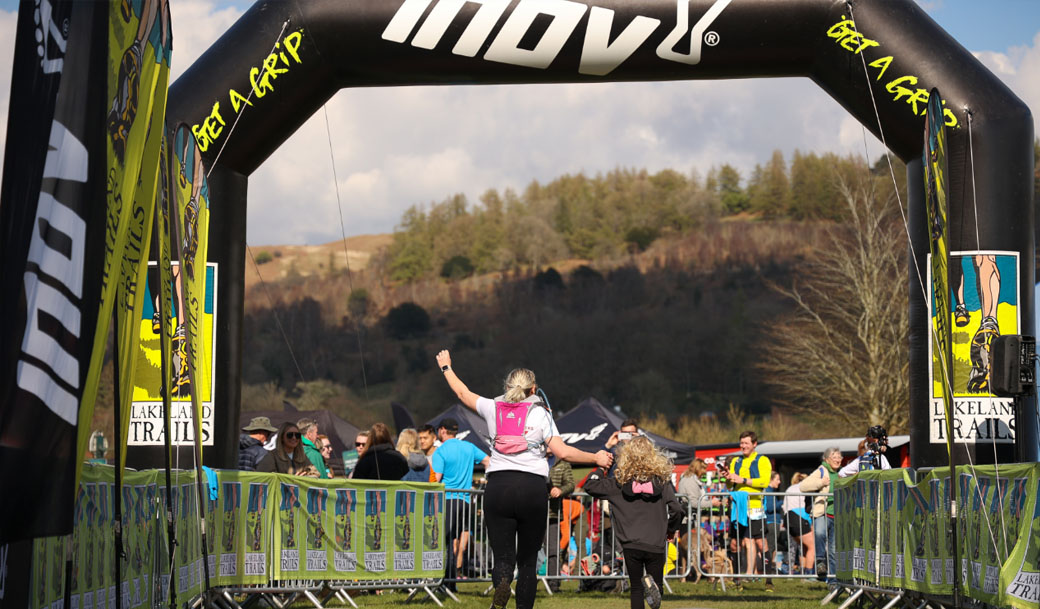
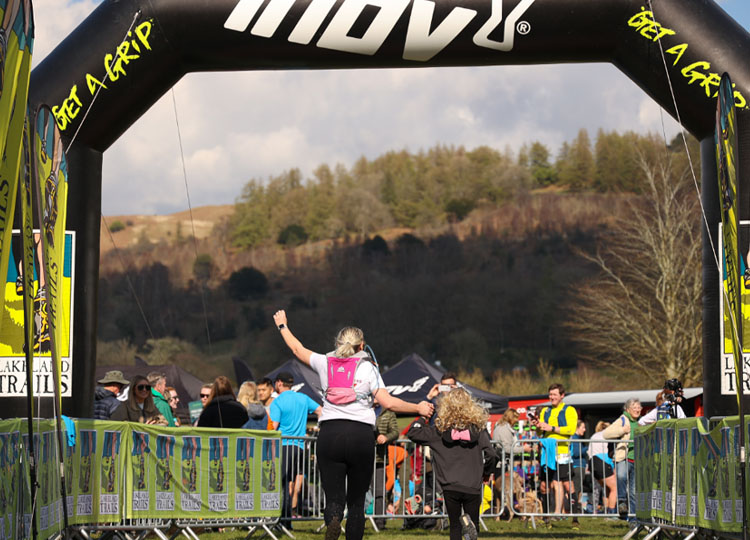
5 tips for your 10k trail race
1. Research the route and terrain of your race
Knowing what to expect will give you a big confidence boost on race day. If you can, jog the 10K route a few weeks before your race. Make a note of any steep climbs and descents. Also consider the terrain you’ll be running on – is it rocky/hard ground, soft/muddy, or a bit of both?
2. Invest in decent trail running shoes
Yes, we would say that wouldn’t we! After all your hard training, you’ll want shoes that allow you to move fast over the ground. Not all trail running shoes are created equal – some are better at handling softer ground, and some are better at handling harder trails. Buy shoes that suit the terrain you’ll be racing on. A great all-round option is the TRAILTALON but depending on your route, you might want a more specialised model.
3. Pace yourself
Racing on trail is different to racing on roads. Trying to stick to an average speed for instance might not be the best strategy, particularly on hilly or technical courses. Instead consider sticking to a rate of perceived exertion, or heart rate range, to make sure you run strongly throughout the race.
4. Hone your technical skills
Practice your running technique – particularly running uphill and downhill. Our 10K training plan includes plenty of hill work – use those sessions to hone your technique as well as your speed.
5. Should you carry extra kit?
Most trail 10K races won’t have a mandatory kit list. But depending on the course, you might want to consider a small waistpack to carry a jacket and gloves in case conditions change quickly.
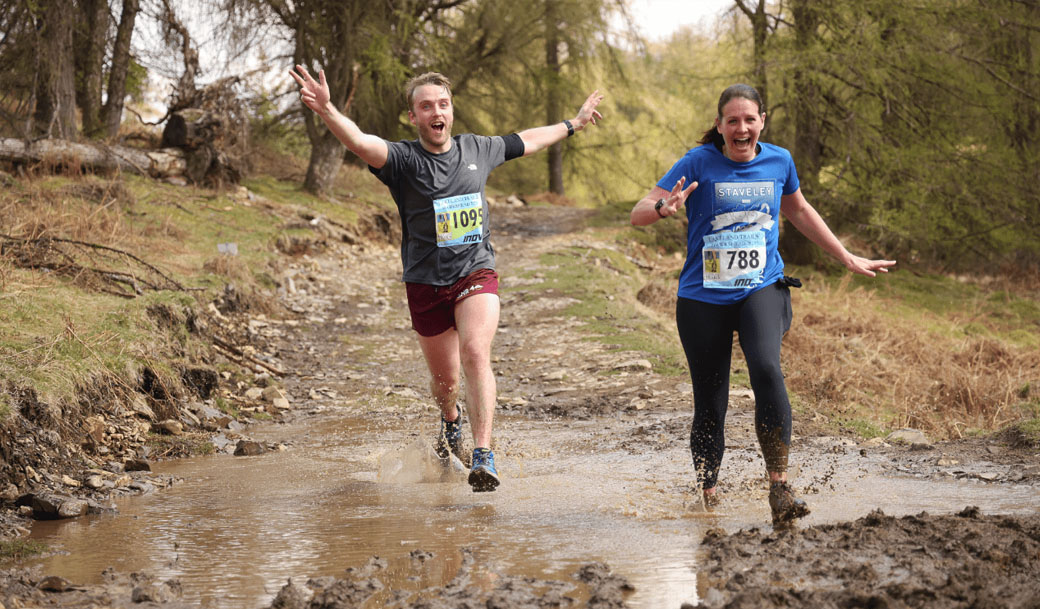
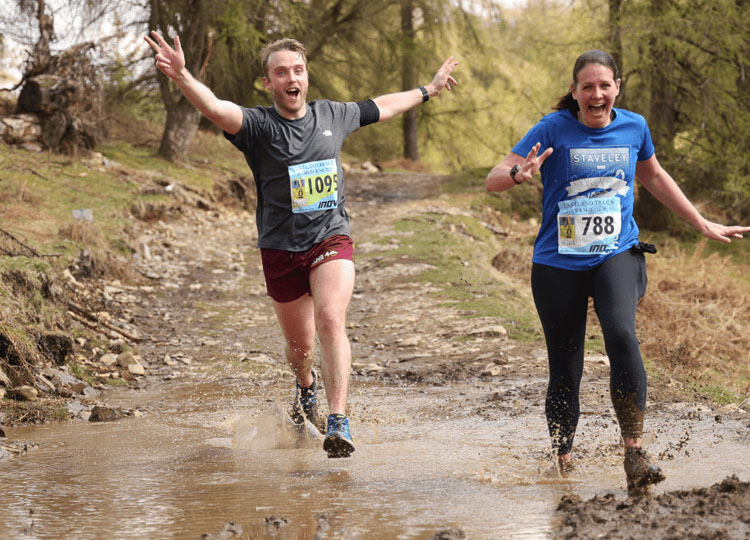
Some great trail events to try
Need some inspiration? There are hundreds of trail 10Ks every year. Here are some of our favourites:
- Lakeland Trails, Lake District
Every event in the Lakeland Trails series has a 10K option (with the exception of the Ultra event). That’s eight 10Ks spread throughout the year between April and October, in iconic settings such as Coniston, Hellvelyn and Ullswater. - Pennine Trails, The Pennines
Races in, around, and sometimes outside of the Pennines and The Pennine Way. There are several 10K and 10K-ish options in the Pennine Trails series, all set in beautiful locations. - Endurance Life, Coastal Locations In England & Wales
With coastal trail 10Ks up and down the country, you can pick from races located in Cornwall through to Northumberland.